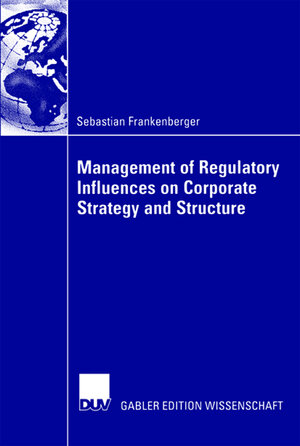Management of Regulatory Influences on Corporate Strategy and Structure
von Sebastian Frankenberger, Vorwort von Prof. Dr. Günter Müller-StewensForeword In recent years regulation and deregulation issues grew into a major concern of corpo rate management. Asked about their biggest pain points, managers from different businesses, not only network-based industries like telecommunications, transportation, and energy, but also chemicals or food and beverages, mentioned uncertainty resulting from regulation. Despite this fact, strategic management has so far widely neglected the interactions and inter-dependencies between corporate and regulatory actors. With this dissertation, the author aims at closing this gap through a better integration of external, regulatory actors into the strategy formation process. More specifically, he asks how regulatory actors impact corporate strategy and structure and how corporate management can proactively manage this type of external involvement. Based on an extensive literature review, the author shows that extant models of the strategy formation process focus almost exclusively on actors internal to the firm; ex ternal actors are widely neglected. In general, they have been condensed under rather abstract conditions of the environment (such as uncertainty or complexity). If explic itly considered, only selected elements (e. g., innovativeness, diversification, or organ izational design) have been analyzed in primarily content-based, quantitative, cro- secfional studies. A broader understanding of the complex inter-dependencies and mu tual influences between corporate and external actors remains lacking.







